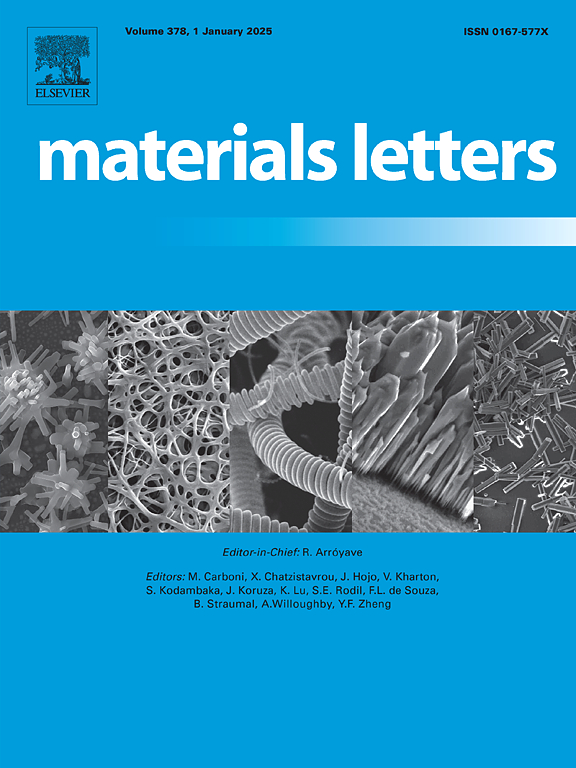Enhanced strain with excellent thermal stability in two-step sintered Gd-doped PMN-PZT for piezoactuator applications
IF 2.7
4区 材料科学
Q3 MATERIALS SCIENCE, MULTIDISCIPLINARY
引用次数: 0
Abstract
The present study emphasizes the impact of 1.5 mol% Gd-doping in PMN-PZT ceramics on the structure, microstructure, domain dynamics, strain response and its thermal stability developed through two step sintering (TSS) technique. Gd-doped PMN-PZT displayed high density with ∼ 50 % reduction in grain size from 6.48 µm to 3.2 µm and increase in tetragonal phase fraction from 41.08 % to 59.45 %. Further large signal piezoelectric coefficient (d33*) increased to 40.4 % i.e., from 457 pm/V to 641 pm/V. Rayleigh and dynamic scaling analysis revealed that Gd-doping increases the reversible domain wall motion thereby leading to improved d33* values. Interestingly, temperature dependent unipolar S-E curves measured till 200 °C displayed a strain variation of only 4.7 % in Gd doped PMN-PZT whereas undoped ceramics showcased 51 % variation. These results highlights the potential of Gd-doping and TSS for developing fine grained thermally stable piezoceramics suitable for piezoactuator applications that demand high performance and reliability over wide temperature range.
求助全文
约1分钟内获得全文
求助全文
来源期刊

Materials Letters
工程技术-材料科学:综合
CiteScore
5.60
自引率
3.30%
发文量
1948
审稿时长
50 days
期刊介绍:
Materials Letters has an open access mirror journal Materials Letters: X, sharing the same aims and scope, editorial team, submission system and rigorous peer review.
Materials Letters is dedicated to publishing novel, cutting edge reports of broad interest to the materials community. The journal provides a forum for materials scientists and engineers, physicists, and chemists to rapidly communicate on the most important topics in the field of materials.
Contributions include, but are not limited to, a variety of topics such as:
• Materials - Metals and alloys, amorphous solids, ceramics, composites, polymers, semiconductors
• Applications - Structural, opto-electronic, magnetic, medical, MEMS, sensors, smart
• Characterization - Analytical, microscopy, scanning probes, nanoscopic, optical, electrical, magnetic, acoustic, spectroscopic, diffraction
• Novel Materials - Micro and nanostructures (nanowires, nanotubes, nanoparticles), nanocomposites, thin films, superlattices, quantum dots.
• Processing - Crystal growth, thin film processing, sol-gel processing, mechanical processing, assembly, nanocrystalline processing.
• Properties - Mechanical, magnetic, optical, electrical, ferroelectric, thermal, interfacial, transport, thermodynamic
• Synthesis - Quenching, solid state, solidification, solution synthesis, vapor deposition, high pressure, explosive
 求助内容:
求助内容: 应助结果提醒方式:
应助结果提醒方式:


